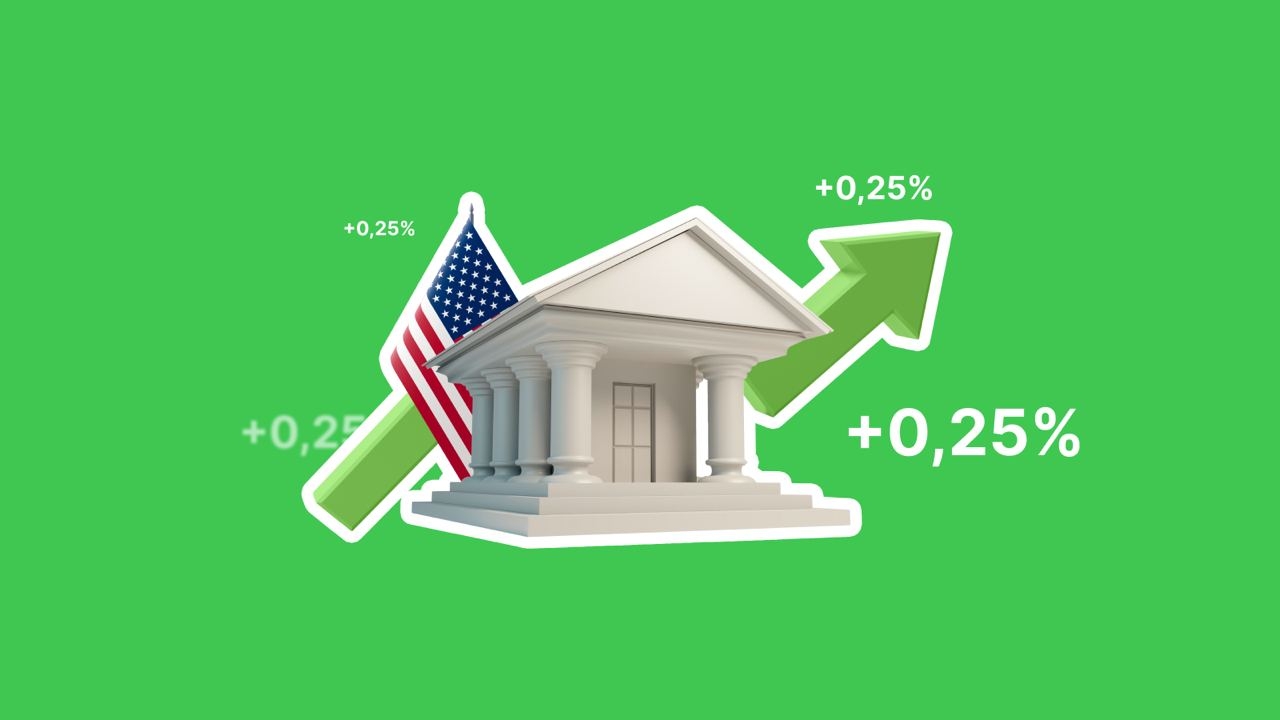In a bold and decisive move, the Federal Reserve has turned up the heat in its battle against inflation.
On March 22, 2023, the Fed raised its key interest rate by 25 basis points, sending borrowing costs soaring to levels unseen since 2007. With the highest inflation rate in a generation and the most severe banking crisis since 2008 looming large, the stakes have never been higher. In this article, we'll delve into the intricacies of the Fed's historic decision and examine how the markets have responded to this game-changing announcement.
FOMC explanatory note
The US central bank announced its ninth consecutive rate increase, raising the benchmark interest rate to a range of 4.75% to 5% — the highest since 2007. This move came as a response to the persistently elevated inflation and was in line with most investors' expectations.
Despite calls for a pause in the tightening cycle to support financial stability, Fed Chair Jerome Powell expressed commitment to restoring price stability and reassured the public of the central bank's actions.
Banking crisis context
The recent collapse of Silicon Valley Bank (SVB) and the turmoil surrounding other banks, such as Credit Suisse and Signature Bank, added a layer of uncertainty to the Fed's decision. Powell called SVB an "outlier" and emphasized the need to strengthen supervision and regulation.
Inflation remains a global issue
Other central banks, including the Bank of England and the European Central Bank, are expected to raise rates in response to the growing inflationary pressure. In doing so, the Fed aims to bring inflation back down to its 2% target, but Powell acknowledged that the journey is likely to be bumpy.
How does raising the interest rate affect the markets?
Following the Fed's rate hike, various market segments reacted differently to the news, reflecting the complexity of the situation and the different factors influencing each sector:
📊 Asian markets 👉 after the announcement, Asian markets experienced mixed results.
📊 Gold 👉 the precious metal was set to retake the $2,000 mark following the rate hike. Investors often perceive Gold as a hedge against inflation and economic uncertainty. The dovish outlook from the Federal Reserve, coupled with concerns over the ongoing banking crisis, prompted investors to seek refuge in Gold.
📊 Currency markets 👉 the $EUR/USD appeared poised to surpass 1.0900, as the Fed signaled a potential pause in its rate-hiking spree. This pause suggests a slower pace of future interest rate increases, which could weaken the US Dollar relative to other currencies. Consequently, the US Dollar fell to test the bottom of 102.00.
📊 US stocks 👉 major U.S. stock indexes such as the Dow Jones ($DOW30), Nasdaq ($NAS100) and S&P 500 ($SPX500) fell after the announcement of the rate hike. After a while, however, they began to correct and rise. The smaller-than-expected interest rate hike and the possibility of pausing further rate hikes helped ease investor fears of tighter financial conditions, which led to this reaction in US stocks.
Summary
The Federal Reserve's decision to raise interest rates by 25 basis points marks its determination to combat elevated inflation while managing the ongoing banking crisis. As markets react to this move, the world awaits further measures by central banks to address inflation and ensure financial stability.


